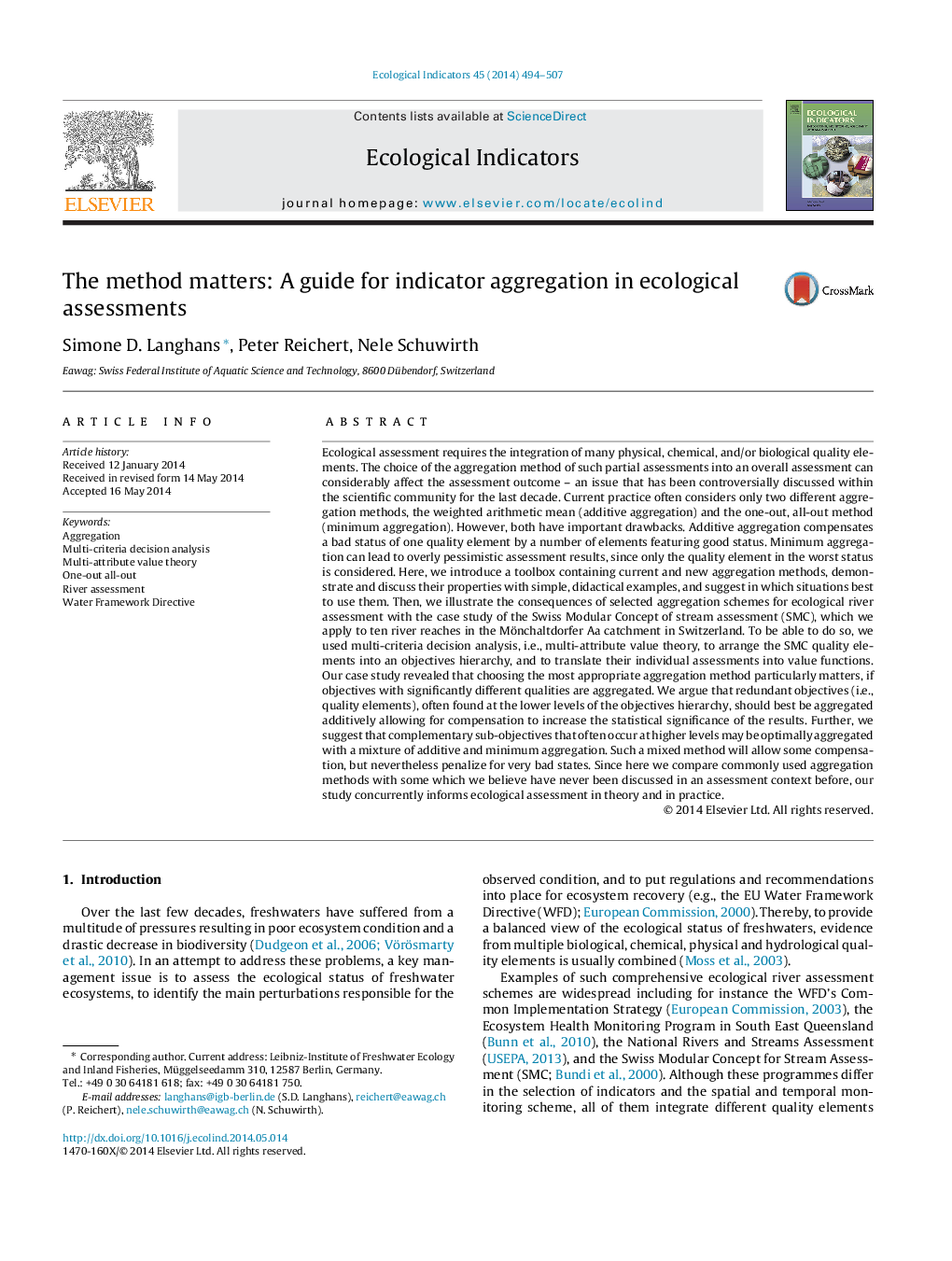| Article ID | Journal | Published Year | Pages | File Type |
|---|---|---|---|---|
| 4373091 | Ecological Indicators | 2014 | 14 Pages |
•Ecological assessment requires the integration of many different quality elements.•We provide a toolbox of aggregation methods with suggestions on when to use which one.•Aggregation properties are discussed with didactical examples and a case study.•Additive is optimal for redundant, mixed additive-minimum for complementary elements.•The method matters if elements with significantly different qualities are aggregated.
Ecological assessment requires the integration of many physical, chemical, and/or biological quality elements. The choice of the aggregation method of such partial assessments into an overall assessment can considerably affect the assessment outcome – an issue that has been controversially discussed within the scientific community for the last decade. Current practice often considers only two different aggregation methods, the weighted arithmetic mean (additive aggregation) and the one-out, all-out method (minimum aggregation). However, both have important drawbacks. Additive aggregation compensates a bad status of one quality element by a number of elements featuring good status. Minimum aggregation can lead to overly pessimistic assessment results, since only the quality element in the worst status is considered. Here, we introduce a toolbox containing current and new aggregation methods, demonstrate and discuss their properties with simple, didactical examples, and suggest in which situations best to use them. Then, we illustrate the consequences of selected aggregation schemes for ecological river assessment with the case study of the Swiss Modular Concept of stream assessment (SMC), which we apply to ten river reaches in the Mönchaltdorfer Aa catchment in Switzerland. To be able to do so, we used multi-criteria decision analysis, i.e., multi-attribute value theory, to arrange the SMC quality elements into an objectives hierarchy, and to translate their individual assessments into value functions. Our case study revealed that choosing the most appropriate aggregation method particularly matters, if objectives with significantly different qualities are aggregated. We argue that redundant objectives (i.e., quality elements), often found at the lower levels of the objectives hierarchy, should best be aggregated additively allowing for compensation to increase the statistical significance of the results. Further, we suggest that complementary sub-objectives that often occur at higher levels may be optimally aggregated with a mixture of additive and minimum aggregation. Such a mixed method will allow some compensation, but nevertheless penalize for very bad states. Since here we compare commonly used aggregation methods with some which we believe have never been discussed in an assessment context before, our study concurrently informs ecological assessment in theory and in practice.
